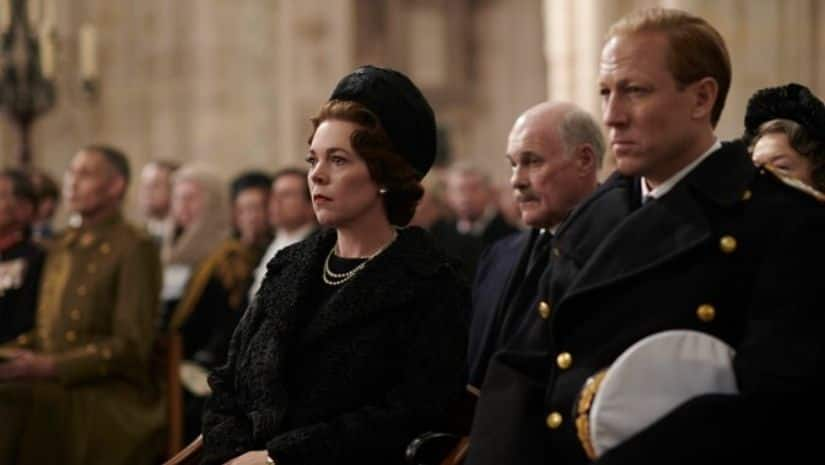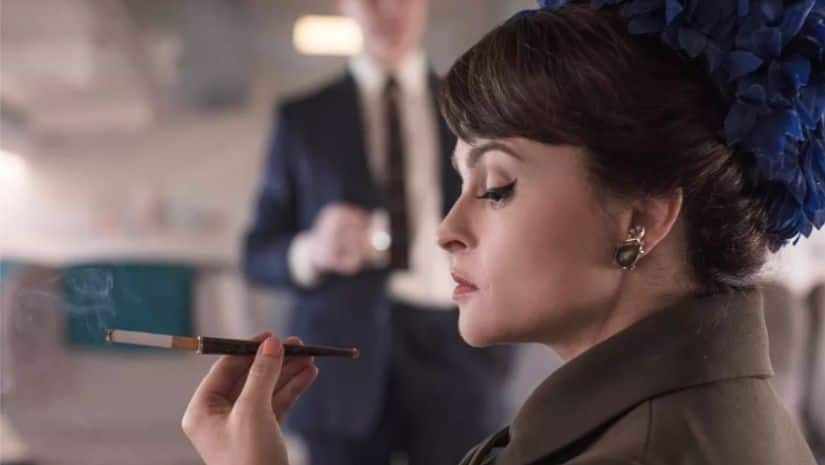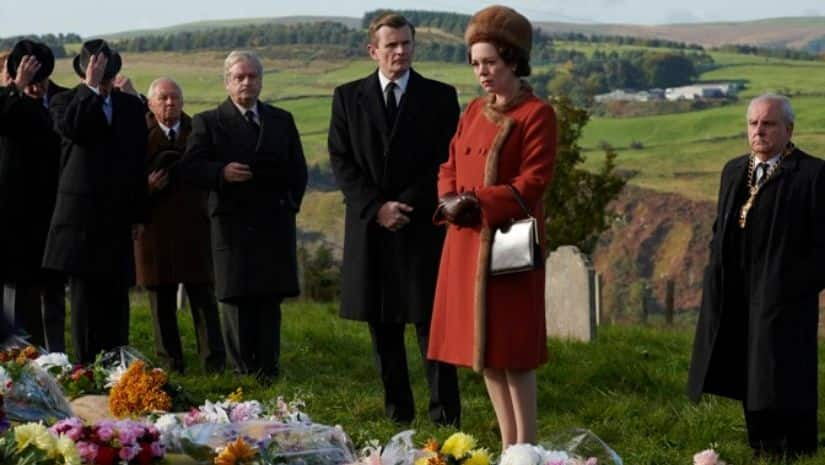In its first two seasons, Netflix series The Crown , ensured its audience was enthralled by the origin story of the stoic English monarch Queen Elizabeth II. Claire Foy came in with a spate of emotions to give a picture of glory attained at the cost of personal emotional loss. Foy’s early, jittery days give way to Olivia Colman’s assured performances, one which comes naturally with age and understanding. The actress is as brilliant when she has to gouge within her character’s deepest fissures to bring emotionality, as she is when being the ice-princess, safely perched behind the walls of the queen’s favourite Windsor castle. But unlike the smooth transformation from Foy to Colman, Peter Morgan’s brainchild as a whole, feels slightly jerky. Always a stickler for historical context, The Crown aces the art of building a borderline fictional royal world, in the backdrop of all the crises that history books have infamously recorded. Now placed comfortably in the late 60s, the show’s third episode titled Aberfan, is arguably one of its best. Morgan shines in portraying the queen’s most personal, touching shades with the parallel storyline of the throne’s most-regrettable mistakes of all times (at least Elizabeth would go on to consider it one of her major political hiccups in her reign, one that she regrets till date). [caption id=“attachment_7668581” align=“alignnone” width=“825”] Olivia Colman in a still from The Crown season 3.[/caption] But not only Aberfan, audiences are privy to multiple tectonic shifts in the political canvas of the times — Harold Wilson’s election after Churchill’s (moving) death; the socio-political consequences of Lord Mountbatten’s (performed by a flamboyantly uninhibited Charles Dance); Princess Margaret’s crucial role in bailing out the monarchy with her charms on American President Lyndon B Johnson — are all shown by successful tie-ins with the reticent royal family. This brings us to Elizabeth’s (ironically) strongest aides, Prince Philip (played by a conscientious Tobias Menzies) and Margaret (Helena Bonham Carter). Though narratively Philip had lot more to do this season, Menzies’ Philip seems much more literal, almost as if the character was developed after watching several real-life videos of the temperamental prince. Matt Smith (who played him in the first two seasons) brings in a menacing strain to Philip’s English sobriety, which provided a perfect contrast to Foy’s unsure baby steps into the monarchy. Menzies ticks off the criteria list, but never really manages to permeate the character’s odd albeit complex nature. [caption id=“attachment_7668551” align=“alignnone” width=“825”]
 Olivia Colman and Tobias Menzies in a still from The Crown[/caption] Bonham Carter brings in a sense of devastation to Margaret. Vanessa Kirby’s acerbic yet gullible concoction gives way to Carter’s version of embittered middle age. The part seems entirely formulated to suit Helena’s sense of abandon while spiralling down the rabbit hole. Margaret’s apparently empty conversations with her absent husband Lord Snowdon (Ben Daniels), brings out the best in her. The question of being overshadowed by an elder sister, despite being King George VI’s favourite child, was always the character’s definition and undoing simultaneously. But what Carter brings to the table, is a need to flourish despite it — a need met with constant failure. The actress (unsurprisingly) brings about Margaret’s inner misery and outer excesses so well, that your heart goes out to her struggles while she tries bridging this chasm. [caption id=“attachment_7668621” align=“alignnone” width=“825”]
Olivia Colman and Tobias Menzies in a still from The Crown[/caption] Bonham Carter brings in a sense of devastation to Margaret. Vanessa Kirby’s acerbic yet gullible concoction gives way to Carter’s version of embittered middle age. The part seems entirely formulated to suit Helena’s sense of abandon while spiralling down the rabbit hole. Margaret’s apparently empty conversations with her absent husband Lord Snowdon (Ben Daniels), brings out the best in her. The question of being overshadowed by an elder sister, despite being King George VI’s favourite child, was always the character’s definition and undoing simultaneously. But what Carter brings to the table, is a need to flourish despite it — a need met with constant failure. The actress (unsurprisingly) brings about Margaret’s inner misery and outer excesses so well, that your heart goes out to her struggles while she tries bridging this chasm. [caption id=“attachment_7668621” align=“alignnone” width=“825”] Helena Bonham Carter as Princess Margaret[/caption] Another highlight of the series is Prince Charles (Josh O’Connor). Expectantly, audiences are shown how the crown prince is generally a sore standout, much to the dismay of his royal clan, especially his father. O’Connor aces the repulsive mix of self-loathing and privileged entitlement in the young man, who would go on to become England’s most celebrated royal villain. Having laid the grounds with such eccentric characters, Morgan should have then had the finesse in stitching these megalomaniacs into a riveting narrative. But Morgan, director Benjamin Caron, writer David Hancock (one episode) lose the vision somewhere midway. Episodic viewings, which only added to Morgan’s world in the first two seasons, introduces a staccato abruptness in the third one. [caption id=“attachment_7668561” align=“alignnone” width=“825”]
Helena Bonham Carter as Princess Margaret[/caption] Another highlight of the series is Prince Charles (Josh O’Connor). Expectantly, audiences are shown how the crown prince is generally a sore standout, much to the dismay of his royal clan, especially his father. O’Connor aces the repulsive mix of self-loathing and privileged entitlement in the young man, who would go on to become England’s most celebrated royal villain. Having laid the grounds with such eccentric characters, Morgan should have then had the finesse in stitching these megalomaniacs into a riveting narrative. But Morgan, director Benjamin Caron, writer David Hancock (one episode) lose the vision somewhere midway. Episodic viewings, which only added to Morgan’s world in the first two seasons, introduces a staccato abruptness in the third one. [caption id=“attachment_7668561” align=“alignnone” width=“825”] Production Design was clearly one of the best departments in The Crown season 3[/caption] However, it is not all bland. Glorious moments come out from the season, so much so that the earlier actors’ performances fade to the recesses of the mind. Artfully built sets indicate the sprawling production design budgets on the series. From palace interiors, to the ominous Parliament rooms, viewers are brought into a world constantly struggling to remain relevant amidst the fast-growing, epoch-making technological findings and revolutions. The Crown season 3 revels in the flaws of its participants, but somehow the whole is lesser than the sum of its parts. Rating: *** (All images from Netflix)
Production Design was clearly one of the best departments in The Crown season 3[/caption] However, it is not all bland. Glorious moments come out from the season, so much so that the earlier actors’ performances fade to the recesses of the mind. Artfully built sets indicate the sprawling production design budgets on the series. From palace interiors, to the ominous Parliament rooms, viewers are brought into a world constantly struggling to remain relevant amidst the fast-growing, epoch-making technological findings and revolutions. The Crown season 3 revels in the flaws of its participants, but somehow the whole is lesser than the sum of its parts. Rating: *** (All images from Netflix)
Episodic viewings of The Crown, which only added to Peter Morgan’s world in the first two seasons, introduces a staccato abruptness in the third one
Advertisement
End of Article
Written by Shreya Paul
A Theory of Communications enthusiast still learning social skills. Forever curious about the effects of good food on grumpy people. see more


)
)
)
)
)
)
)
)
)



